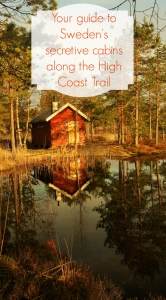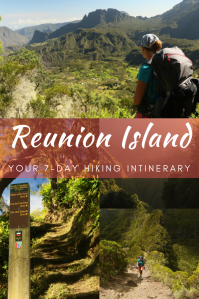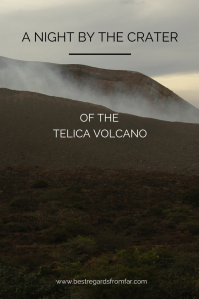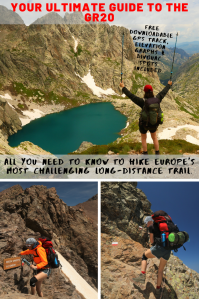We are sitting on a flat rock by the roaring Indian Ocean observing the powerful waves crashing violently into the rugged rocky shore and spraying 15-metre high into the air. Inland the green hills, warmly bathed by the sunset light, seem to never end. Far on the horizon, only a few white rondavels with their thatched roofs remind us that we are not alone in this world. We are discovering the remote land of the Pondo people stretching along the last unspoilt shore of South Africa during a five-day trek. But the Wild Coast is jeopardised by an international titanium mining project that would disfigure it and rob the Pondo people of their most precious asset: their land.
Our adventure on foot started in Port Edward about 150 kilometres south of Durban. Leaving the tacky Wild Coast casino behind, the past few days have only led us along beaches, ragged shorelines and fishermen’s paths. Not a building but for some rondavels by the Pondo villages. Not a road but for a few 4×4 tracks leading back to the N2 highway that runs parallel to the shore about 50 kilometres inland. Hardly a cell phone signal. The Pondos value their land and simple and peaceful life based on sustainable farming. “We are not poor!” Siya states firmly. Our 25-year old Pondo guide is so passionate about his land and his people that he is strongly committed to prevent the mining project. He knows that it is a difficult challenge, as on paper a peaceful community with sustainable farming is summed up by a high unemployment rate and living standards below the poverty level: statistics that the mining companies would happily improve. When the government promotes the jobs that would be created and the infrastructures that would be better like road access and connection to the power grid, Siya is very cautious: “the jobs would be mining jobs, and that would last for 25 years only, the time it takes to deplete our red dunes of the titanium.” What he stands for instead is a long-term vision that would protect the land and the Pondo culture with its specific traditions thanks to ecotourism for generations to come. And as he takes us on this journey through the bucolic Pondoland, his vision seems very realistic as this stretch of the Wild Coast is an untouched gem.
Kilometres of unspoiled beaches are only interrupted by a few river mouths. Depending on the tide, the crossing can be ankle-high, knee-high, or waist-high. Sometimes the water is so deep that a swim is required to fetch a canoe on the opposite bank, bring it back in a challenging strong current and cross again keeping all the gear dry. In the few occasions when the river crossing is close to a community, a ferryman takes us across on his canoe for a few Rands. Practical and sometimes necessary, it almost spoils the fun as wading across is a nice refreshing adventure, and everything dries fast under the hot African sun.
At times, we leave the sandy beach to hike on a fishermen’s path slightly more inland and more or less parallel to the shoreline. As the trail goes higher, the rugged and wild coastline constantly pounded on by the roaring waves reveals itself more. The peaceful rolling hills contrast with the violence of the ocean, and this is where the Pondo communities have settled. Passing the first Red Dunes where the Xolobeni mine would be located, we arrive in the village of Mnyameni overlooking the Indian Ocean in the distance. A beautiful canyon provides access to fresh water. The high grass is grazed on by a few goats. Kids play soccer. Our host Nolwandile is warming up some water on the fire so that we can clean up after a day of hiking. The shy and caring woman has prepared a delicious dinner with pap made from the corn she farms, chicken and beef stews that she serves us in the rondavel in which we are about to spend the night. Lit by a dim light bulb powered by a small solar panel, we are enjoying this peaceful evening.
Geographically situated between the Zulus in the North and the Xhosas in the South, the Pondos share many traditions with both of these cultures and their language is a mix of both. What may characterize their specificity the best is their very strong sense of community. Nolwandile’s rondavel was chosen to host the homestay by the villagers as the widow with six kids could use the extra income. Thanks to ecotourism, she can put her eldest son through university where he studies Information Technologies. Once Nolwandile’s living standards have improved enough, the homestay will go to another family who is more in need. And it is precisely this strong sense of community that has been undermined by the mining company: one of its initiatives is to distribute free solar panels to people who would back them up. Walking through the villages, pro-mining rondavels can be spotted in a blink of an eye weakening the core value of the Pondos by playing them off against each other. “I know our enemy is the mine, and not the families who need a solar panel and just accept it, not clearly understanding the consequences. We need to remember our values and stay strong together” Siya whispers as we leave the stunning red sand dunes contrasting with the green of the hills or the deep blue of the ocean.
From a higher vantage point on a cliff, we clearly spot a pod of dolphins playing with the rough waves and moving north towards Mozambique. During the season, many whales can also be seen pretty close to the shore as they are migrate to their breeding area along the South African coast. On land, mammals roam freely, like these reedbucks grazing by a shipwreck and surprised by our presence. The strong ocean and its fossilized reef have claimed many boats. The most famous are the São Bento a Portuguese carrack that sank in 1554 and the Grosvenor, a British ship that sank on her return voyage from India in 1782 (the legend says precious cargo was smuggled on her, and many crazy attempts to find the cargo back have failed). More common mammals to spot are cows that are omnipresent. A measure of wealth, they are very important to Pondo tribes and many lay on the beach or graze on the hills not being used for anything else but a trading good or an animal to be sacrificed for special occasions, good or bad. Actually, Siya still has to give one cow and one horse to his in-laws. He married four years ago, and after paying a decent amount cash to the family of the bride (a must before popping the question), he had to negotiate the dowry: one horse, four cows, ten goats, 5 sheep, and ten chickens. Luckily, he has more time to honour his debt, and being married allowed him to ask for land and build his rondavel.
Further south stands Cathedral Rock. Dramatic waterfalls like the Strandloper Falls or the 80-metre high Waterfall Bluff fall directly and majestically into the Ocean. Leaving the main path to follow the river upstream for a few hundred metres, beautiful swimming holes provide a paradisiac break to rest and cool down. With an average of 14 kilometres a day on a rather flat terrain, there is plenty of time to enjoy, swim, and take in the stunning scenery all the way between Port Edward and Mbotyi.
Let’s only hope that the Pondoland that seems disconnected from the modern and aggressive world will remain unspoilt. The application to mine the Xolobeni heavy mineral sands resource has been said to be the moral, cultural and aesthetic equivalent of mining Ayres Rock for granite, or the Great Barrier Reef for Calcium Carbonate. But the Xolobeni mine would be the 10th largest heavy mineral deposit in the world, with 346 million tonnes. The international mining company has pushed hard for the project to go through going to the highest instances of a very corrupted country and not consulting the local people whose livelihood depend on this precious land. The peaceful Pondos have resisted forming the Amadiba Crisis Committee (ACC) but their strong community bond has been weakened by bribery. Opponents have been threatened and attacked, and the head of the ACC was murdered in March 2016.
One could have hoped that forceful relocations of a population were a trauma of the past in post-apartheid South Africa.
Marcella & Claire
Travel tips:
- To explore the breath-taking Wild Coast and to live this adventure refer to Active Escapes, a very professional small business specializing in the outdoors and giving back to local communities. They can easily customize their trips to your specific needs.
- Along the Wild Coast trail, accommodation is a mix of homestays, basic accommodation, lodges, and tented camps.
- To see Siya’s vision, watch this short video.
- There is quite a bit to discover in Mbotyi so make sure to spend an extra day upon arrival.
- Check out this interactive map for the specific details to help you plan your trip and more articles and photos (zoom out) about the area! Here is a short tutorial to download it.
Like it? Pin it!
For more awesome multiday hiking adventures, click on one of these images:
Part of this article was published in the Beyond Boundaries e-magazine by Xtreme Adventure:










































Hello mate great bllog post
Thanks!